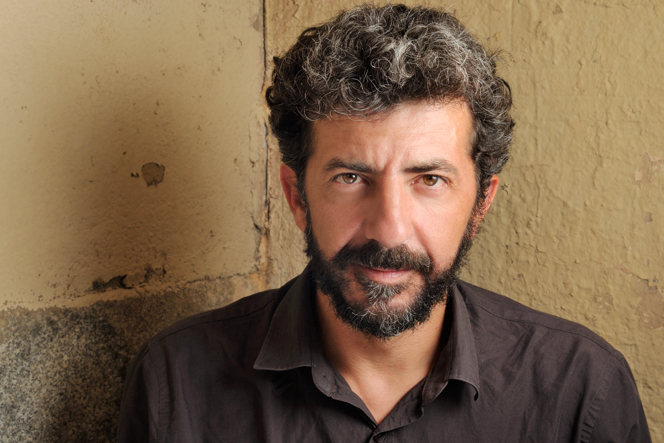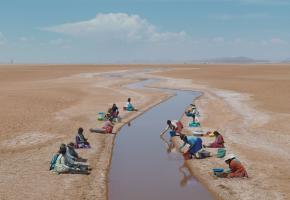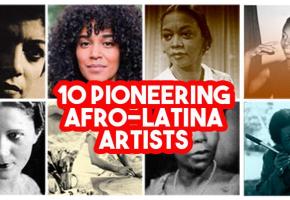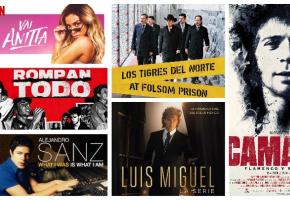LatinoLife: You have cited Atín Aya, the photographer who took stark black-and-white images of the Guadalquivir (in Andalucía) marshlands and their inhabitants, as a great inspiration. How did you come to decide the plot and what inspired you apart from the photos of Atín Aya?
Alberto Rodríguez: In 2005, I went to a photography exhibition with my DOP (director of photography) and friend, Alex Catalán, and we discovered Atín Aya’s photos about life in the marshland. People and places stuck in time. That gave us a place to set our next film but we needed a strong enough plot. In 2012, after seeing various documentaries about the transition to democracy in Spain, we decided that was the period we wanted to situate the film in.
LL: The historical context of the film is precise, and for good reason. What attracted you to writing about the transition in the 1980s?
AR: The historical context is essential. Marshland is a metaphor about the transition from Franco’s dictatorship to democracy. A transition that was not well carried out, where many things were ignored.
Looking again at the archives, we realised that at that time Spain had the same problems that we worry about today. The headlines were all about the debate of territoriality, the abortion law, the economic crisis, the general feeling of tension… That’s why the 80s seemed to us to be a good backdrop.
LL: What do you attribute the subtle changes in the two detectives to?
AR: The two policemen need each other and as the film goes on they become key to the metaphor, like how one Spain needed another in order to change.
LL: Silence, accompanied by the soundtrack, seems to be more important than dialogue. What are the challenges of filming in this way, showing things instead of saying them?
AR: A lot of the time, by saying less you convey more meaning. “Less is more”, that’s how I film; silence is more important than words. The marshlands have their own moments in the film and we have tried to respect them with silence. The soundtrack is the work of Julio de Rosa who created the perfect atmosphere of oppression and mystery which the landscape evokes.
LL: One of the really interesting aspects of the film are the aerial shots. From above, the marshlands look almost like the veins of a human brain. How did Alex Catalán, the director of photography, come up with the idea, and how were they achieved?
AR: The aerial shots are actually photos which were later animated. They are Héctor Garrido’s images, who is the photographer for CSIC (Spanish National Research Council) in Doñana (the national park designated a UNESCO World Heritage Site where Marshland was filmed). Those images were from a study about fractals, patterns that repeat themselves from a microscopic to an enormous scale. For eight years, he has been doing flights around Doñana and he was very kind to give us some photos. There were also other scenes that we did do with a drone. Luckily the government had not banned their use of artistic reasons at that point. If we had to film Marshland now, we would never have been able to do those scenes.
LL: What about how the film is all neutral colours, which evoke the heat and the oppression so well?
AR: The colour palette of the film is that of the marshlands themselves. In the film, it also conveys the heat and the political oppression. Slowly the characters begin to enter the marshlands, and become more and more mired in them.

LL: Do you think the general wellbeing of Spanish cinema has improved in recent years?
AR: Economically speaking, the support that Spanish cinema receives is never enough. We have been lucky so far this year and last year, because the public have been approving a series of films. Reconciling the public with Spain’s national cinema has been the best thing to come out of the last few years.
LL: I read in an interview that you are on the cusp of hating Marshland. Now you’ve coming to England, what about other countries?
AR: I can’t hate a film that has given me so much. But I can’t watch it any more. Yes, it’s coming to England - it’s great news! It’s also going to France, Belgium and Switzerland and to the U.S. in September.
LL: What can you tell me about your next project, The Man of a Thousand Faces?
AR: I can tell you that it is inspired by a novel called “Paesa, the Spy of a Thousand Faces” by Manuel Cerdán. It will be set in the 90s, about a Spanish secret agent called Francisco Paesa and his decisive role in the flight and subsequent surrender of Luis Roldán, the then head of the Guardia Civil. I will be working again with my normal producer, José Antonio Félez, and we are well into the pre-production stage. We will begin filming in July this year, and the film will take us to Madrid, Geneva and Singapore.
Marshland is now available on DVD at Amazon

















